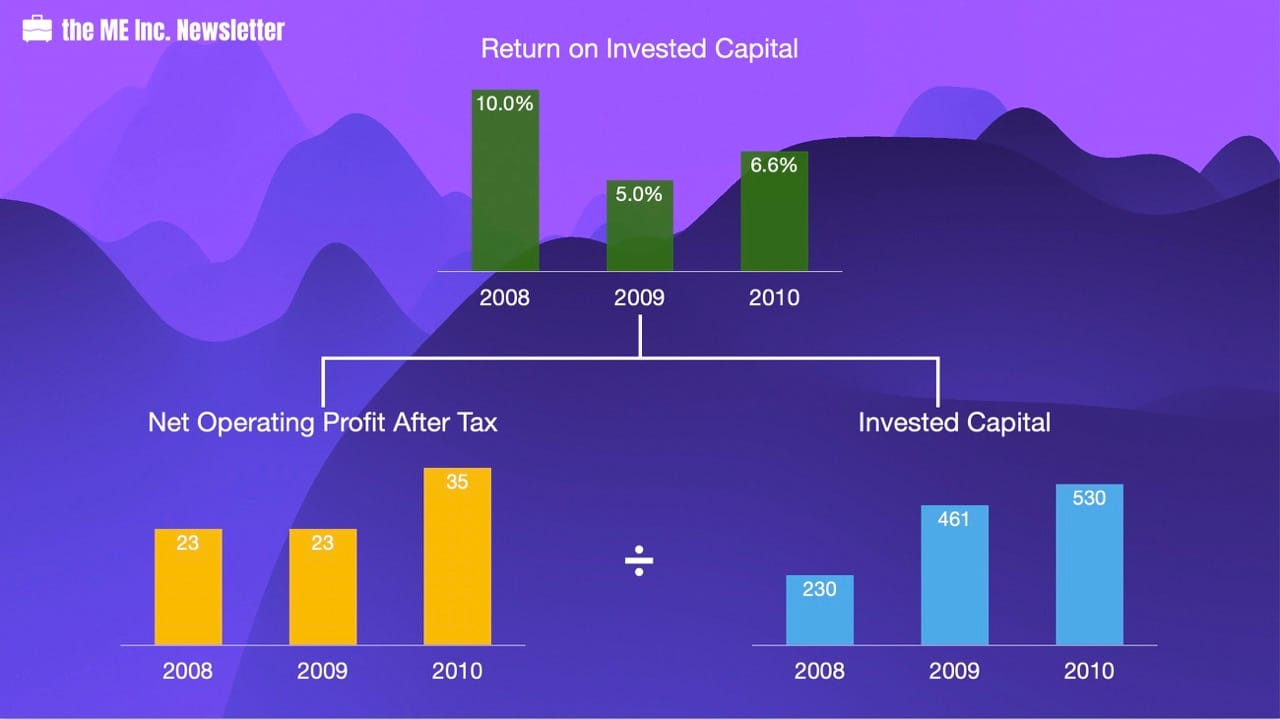What is a Good Company and How to Calculate Return on Invested Capital
How to evaluate the quality of a company? Is a company good or bad? We cover how to calculate the return on invested capital in this one. Read on.

Previously we've covered some factors that affect financials of businesses. Broadly speaking, there are three factors:
- Industry situation such as competitiveness
- The company's strategic positioning
- The company's execution on its strategy
To truly understand a company, it is crucial to know what our ultimate goal is in creating and operating a business.
From the outside looking in, we want to know if a company is good or bad. However, how do you define "good"? Everyone may have their own opinions. You may think a good company should have growth potentials. Some may think a good company should have good leadership. And some others may think a good company should have a good team. Despite all of the above being true, a good company should at all times have the capability of running sustained business, i.e. being able to create adequate cash flow. In other words, we want all of the above things to be true: we want the company to be led by a good entrepreneur, have good teams, foster good corporate culture, or stay competitive in the market. But our ultimate goal is to make money.
The bottomline of a good company is that it can make money. But what is making money?
The first off the top of your head should be the income statement. From the statement, we can tell how much revenue the company generates, and how much profit it makes. We can easily draw a conclusion of whether the company is profitable or not.
Some people may say just income statement is not enough, and we should look at the statement of cash flow as well. So what does making money really mean?
Let's use an example.
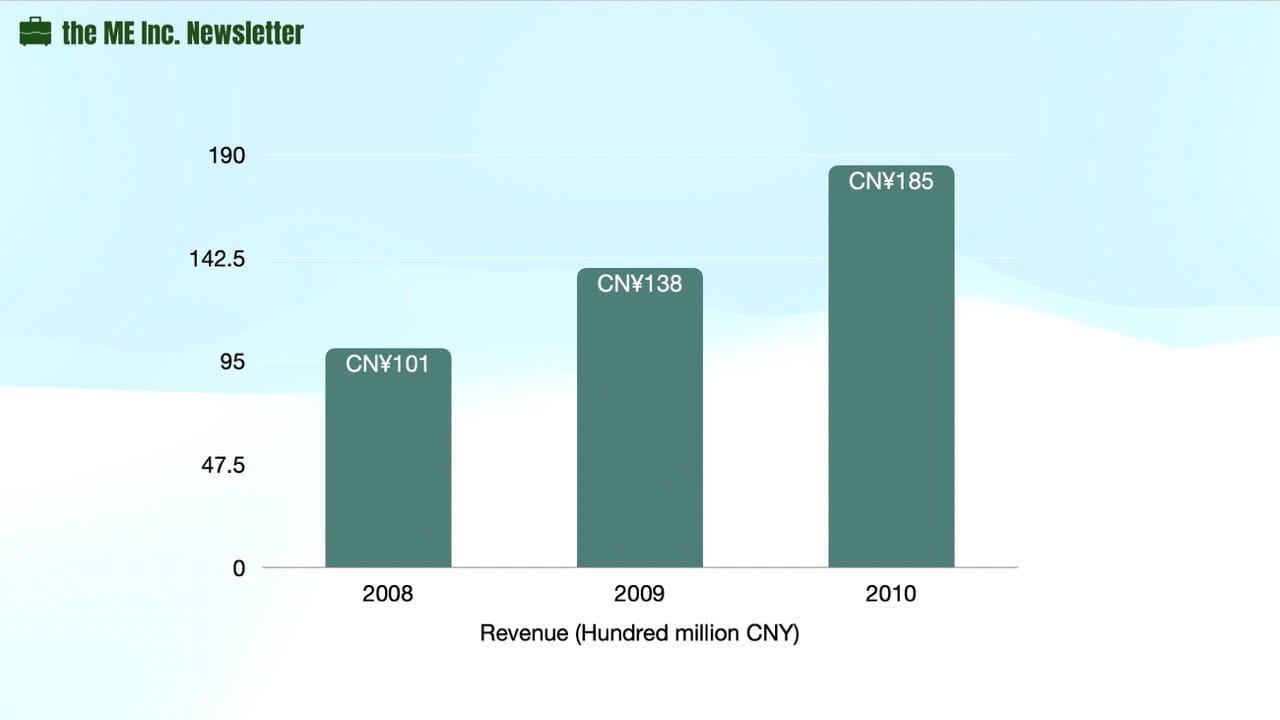
During the three years in this company's operations from 2008 to 2010, it has generated 10.1 billion CNY, 13.8 billion CNY and 18.5 billion CNY of revenues respectively. The annual average growth rate of the company's revenues from 2008 to 2010 is about 35%. This growth rate at the scale of the business is quite remarkable.
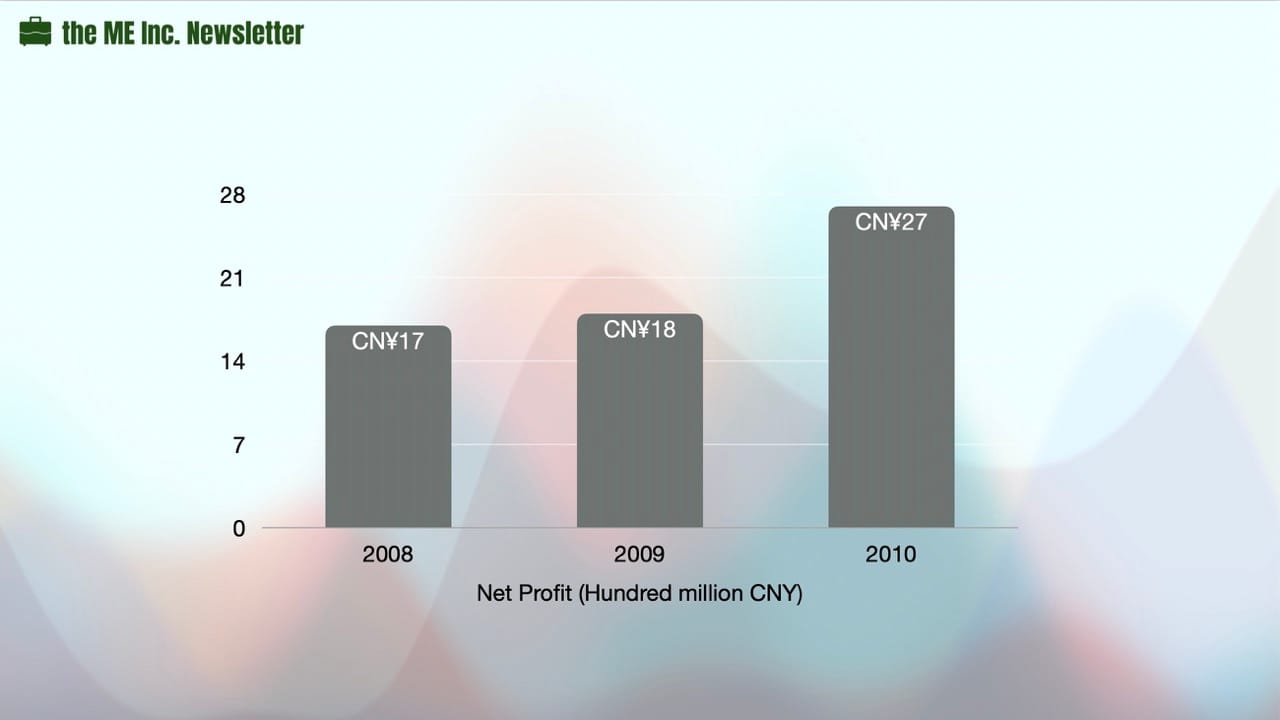
The profits of the respective years are 1.7 billion CNY, 1.8 billion CNY and 2.7 billion CNY respectively, with an annual average growth rate at about 26%.
From either the perspective of revenue or profit, the company's financial performances, especially its growth rate, is really fast.
With both the company's net profits and revenues at hand, we can easily calculate the net profit ratio of the company in each year. Recall that the formula to calculate net profit ratio is as such:
Net Profit Ratio = Net Profit / Revenue
Take the year 2008 as an example. In 2008, the net profit was 1.7 billion, and its sales revenue was 10.1 billion, resulting in a net profit ratio of 17%.
How would you judge a company that generates 10.1 billion in revenue, 1.7 billion in net profit, and has a net profit ratio of 17%? Pretty impressive right?
Can this company be regarded as making money?
If we recall, when we measure the profitability, apart from the net profit rate which concerns returns, we have also discussed another topic called return on investment. We've gone through what level of return this company generates throughout the years, but we still don't know how much was invested in. Now let's look at what the return on investment looks like.
Return on Invested Capital
Here we will introduce a new concept that helps describe the return on investment called return on invested capital, which is the result of net profit divided by invested capital. I also want to put a caveat here on "net profit" as it is not the same as what we have discussed before, but will circle back to see how exactly we can calculate this later in this episode. For now, let's just take a look at the formula of how to calculate return on invested capital:
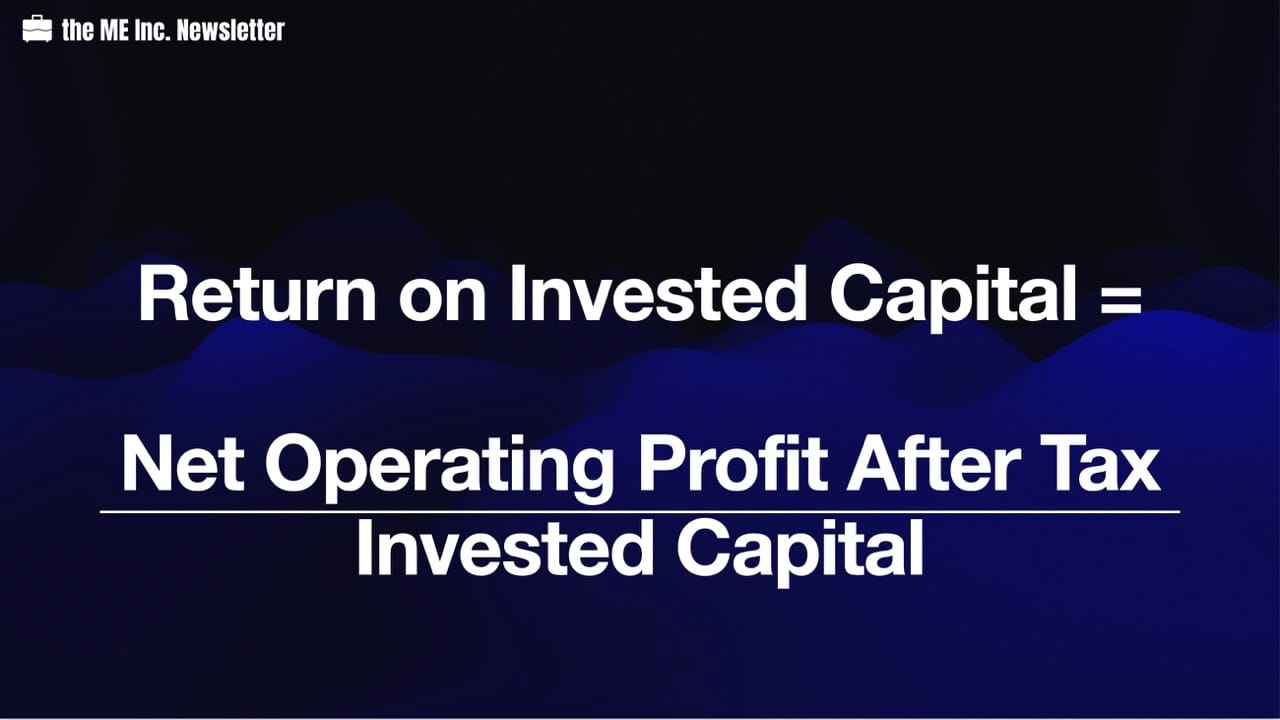
ROA and ROE
You may still remember that in our previous episodes, we have introduced two financial data describing return on investment, which are return on total asset and return on equity.
Return on total asset (ROA) is the result of net profit divided by the total asset. We have learnt that the total asset includes liabilities and shareholders’ equities, meaning that return on total asset actually describes the level of return that the company generates from the perspective of creditors and shareholders.
Return on equity (ROE), on the other hand, only concerns the level of return from the perspective of shareholders; it is calculated by dividing net profit by shareholders' equities.
You may be wondering why we still need a new indicator to calculate a company's returns, considering that we already have ROA and ROE. Is there any relation between the new indicator, return on invested capital, and the old ones?
We have briefly mentioned that the return on invested capital is the result of net profit divided by invested capital. First, let’s look at the denominator, invested capital.
Invested Capital
Let's explore who are the investors in a company. Here we will define investors in a broader sense.
The first party coming to our mind would be shareholders. They put their own money up to create a company, and in exchange, they got shares or ownership.
However in fact, we know creditors also invest in companies. Take banks as an example. Why do banks lend money to a company? The purpose is to gain returns through loans. Banks not only get their principals back, but also interests on those loans as well. Therefore, it is also a type of investment into the company.
Understanding this, let's visit some other liability items on the balance sheet. We know that on the balance sheet, bank loans are just one type of liability. There are still other types of liabilities. The company might also owe money to suppliers, which are called accounts payable. It might owe money from the employees, which is called wage payable. It might also owe money from clients, which is called deposit received or prepaid accounts. It might also owe money from tax bureaus, which is called tax payable.
Though all of the above are all liabilities just like bank loans, we can’t say that our clients, suppliers, employees and tax bureau are our investors, for the reason that they don't lend us money to gain returns. Therefore, only liabilities that bear interests qualify as invested capital.
By now we are ready to conclude on how to calculate invested capital. Invested capital is the total of interest-bearing liabilities and shareholders' equity.
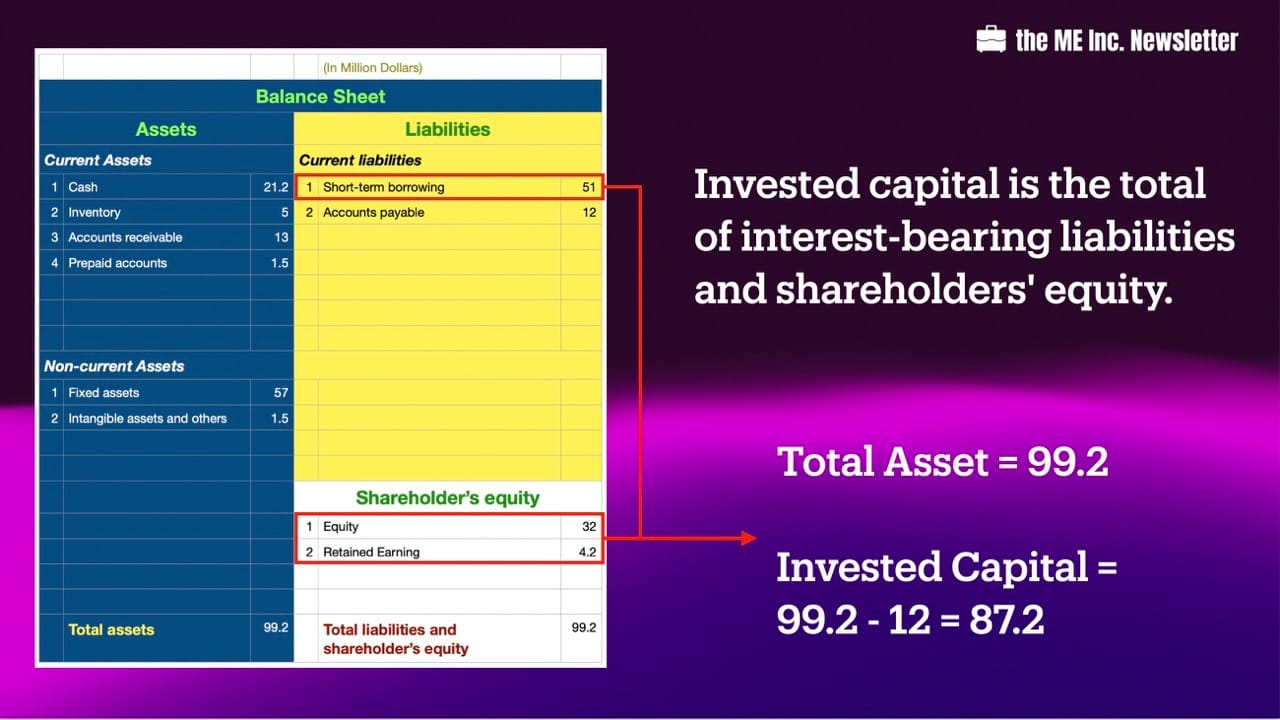
As a result, we can see invested capital is smaller than total assets.
Net Operating Profit After Tax
I've mentioned that there is a caveat when we talked about how return on invested capital is net profit divided by invested capital. Now let's look at the numerator - the "net profit" we've talked briefly at the beginning.
Instead of using net profit, we should use the net operating profit after tax. Let me tell you why.
If we take net profit, the result will be net profit divided by invested capital. We've already covered that invested capital is a more accurate definition of the total asset by including only assets targeted to generating returns. The right to distribute net profit belongs to shareholders only. Creditors do NOT have this right.
If we exchange invested capital with total asset, and after-tax net operating profit with net profit, this ratio will become net profit divided by total asset. In other words, it is actually what we have discussed before, return on total asset.
If the denominator - invested capital - represents the total investment of shareholders and creditors, the numerator should represent the total return of shareholders and creditors. We know shareholders will get the net profit of the company, and creditors will get the interests from the loans they provide. Combining both, we will come up with what we call as net operating profit after tax.
Let's look at the income statement and see how to calculate net operating profit after tax. Normally when we calculate profits from income statement, we will deduct financial expense. Such an expense includes the interests we pay to the banks. We will need to add back the financial expenses to the net profit, together with any non-operating gains/losses if there is any.
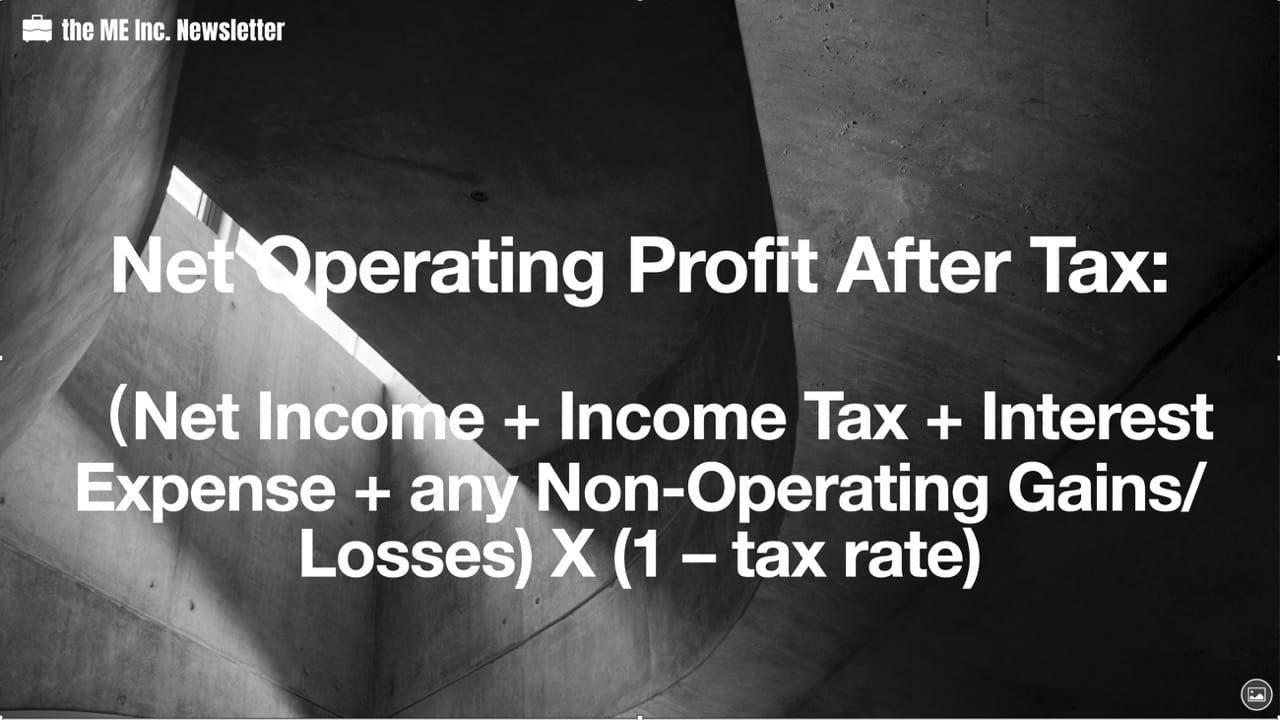
Now let’s see how much is the return on the invested capital of this company. Through some basic calculations, we know that the figures are 10%, 5% and 6.6%. However, we still haven't been able to answer this question: is this a good company? With such a level of return on invested capital, is the company making money?
